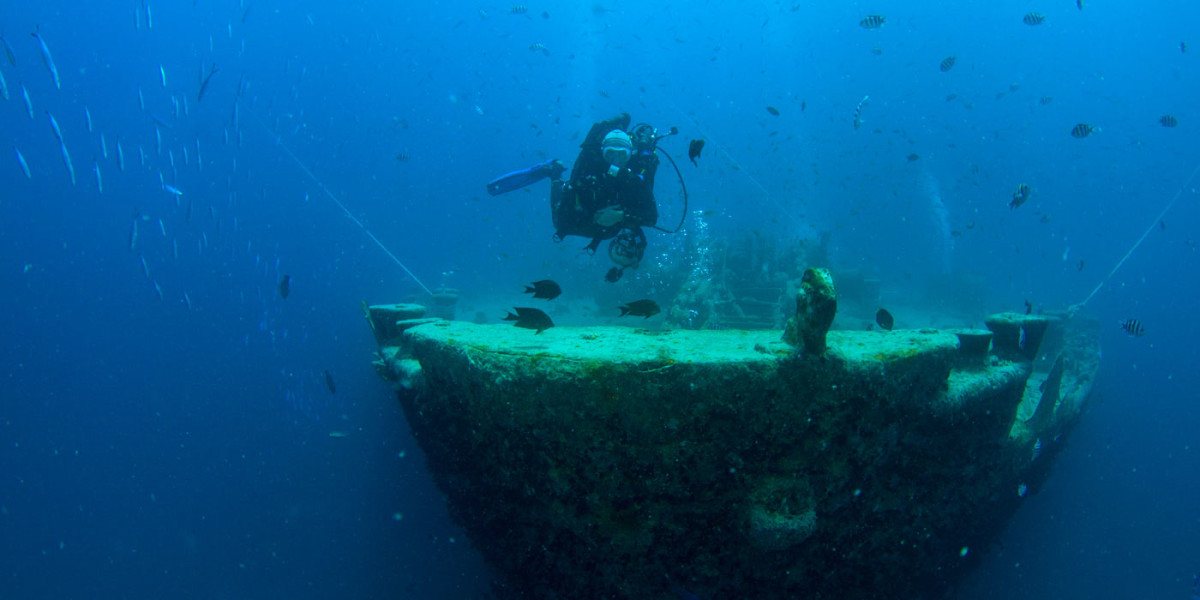My day to day work consists of teaching people either how to dive, or how to increase their diving skills either recreationally or technically. I like it when I get the chance to put the shoe on the other foot and become the student, it reminds me how my students are feeling when they are learning new things.
In my last few blogs I told you about the first few times I tried a rebreather. A few weeks ago I got to go back to school myself and went to Sharm el Sheikh in Egypt to complete my first few levels of rebreather courses- TDI CCR Helitrox Deco Procedures, or to give it a slightly snappier title, ‘MOD 1’.
I arrived at the centre on the first morning at the unheard of time of 8am. In Dahab, everything is very relaxed as it’s predominantly shore diving, but in Sharm most dives are done from a boat so schedules must be adhered to. I met my instructor Chris, who has been living and working in Sharm for the last ten years. He’s ex-military and my favourite type of instructor- fair but strict. I see many instructors who are ‘gentle’ with their students and while you can forgive certain mistakes in recreational diving, when it comes to technical diving no mistake can be tolerated.
We spent the first morning going through some theory then putting the units together. This is a much longer process than with open circuit gear as everything must be done in the right order to make sure it is done correctly and nothing has been missed. Once the many o rings were greased, the scrubber packed and the head unit in place, we were ready to dive. That’s the other thing about rebreathers, there’s a lot of new terminology. Scrubber? Head unit? All these were new terms to me that I’d learnt that morning but I felt comfortable as Chris had explained how the scrubber material ‘cleans’ the exhaled air of CO2 so it is safe to breathe again (hence ‘rebreather’) and the head unit contains all the electronics that control the machine as well as the batteries, it’s very important that that bit stays dry!
Next we were off to the pool. Here we ran through the basic skills that Chris had briefed without any problems. The next morning we went to Sharks Bay, the shallow water training site. There we repeated all the skills as well as practising swimming. This was the tricky part. Although I’d had a few practises before (check out my previous blogs) it’s still a very different feeling. I am very used to deflating my wing to leave the surface, then slowly adding the air back in to slow my descent and finally stop, using my lungs in tandem with the wing to control my buoyancy. I have spent hours working with students to help them achieve the required result of being able to hover motionless and stay in trim i.e. lying horizontally face down in the water. In a normal twinset this is possible by adjusting your weights to ensure you have the correct amount of ballast and that they are in the right place. In the rebreather I had two problems; one was not being able to use my lungs to control my buoyancy, the other was trying to stay flat. You cannot use your lungs to help you as you are breathing in to and out of counter-lungs which help keep the volume of the gas you are breathing constant. These are basically a breathing bag, so as your lungs inflate, they deflate and vice versa. So instead of using your lungs to stay neutrally buoyant you must rely solely on your wing. I spent ages trying to find the neutral point, slowly adding air until I slowed my descent then stopping all finning to test and see if I was truly neutral. The tipping point felt incredibly fine, if I rose or dropped by less than half a meter or changed my trim in any way I started ascending or descending and had to start again. I watched Chris gliding gracefully along and realised this must be how some of my students felt when they started out- the inelegant hippo next to the graceful ballerina (although Chris may well kill me for comparing him to a ballerina).
The other problem I was having was my trim. This is something I am very picky about as it affects how much resistance you have as you swim through the water. I had just two kilograms in the trim pockets right at the top of the unit but could still feel my feet pulling me down. I had brought my standard heavy neoprene fins and quickly realised my mistake. I would need to use lighter fins in order to allow my feet to stay higher. As it was I put up with a bit of back ache whilst I kept it arched the whole time to keep my feet up.The rest of the week passed quickly. Chris continually gave me problems to deal with based on the skills that I had learnt. I am not a fast learner when it comes to new skills but I enjoy the challenge of working on them and perfecting them. This is one of the reasons I’ve enjoyed this course, any chance I get to increase my knowledge and skills I’ll happily take.
Now I’m a certified CCR diver I know it will take me many dives and hours before I’m fully proficient. In the meantime I’ll enjoy learning and being a beginner again, and when my students are struggling with something I will think back to what it’s like to be learning new skills and hopefully be fair with them!



